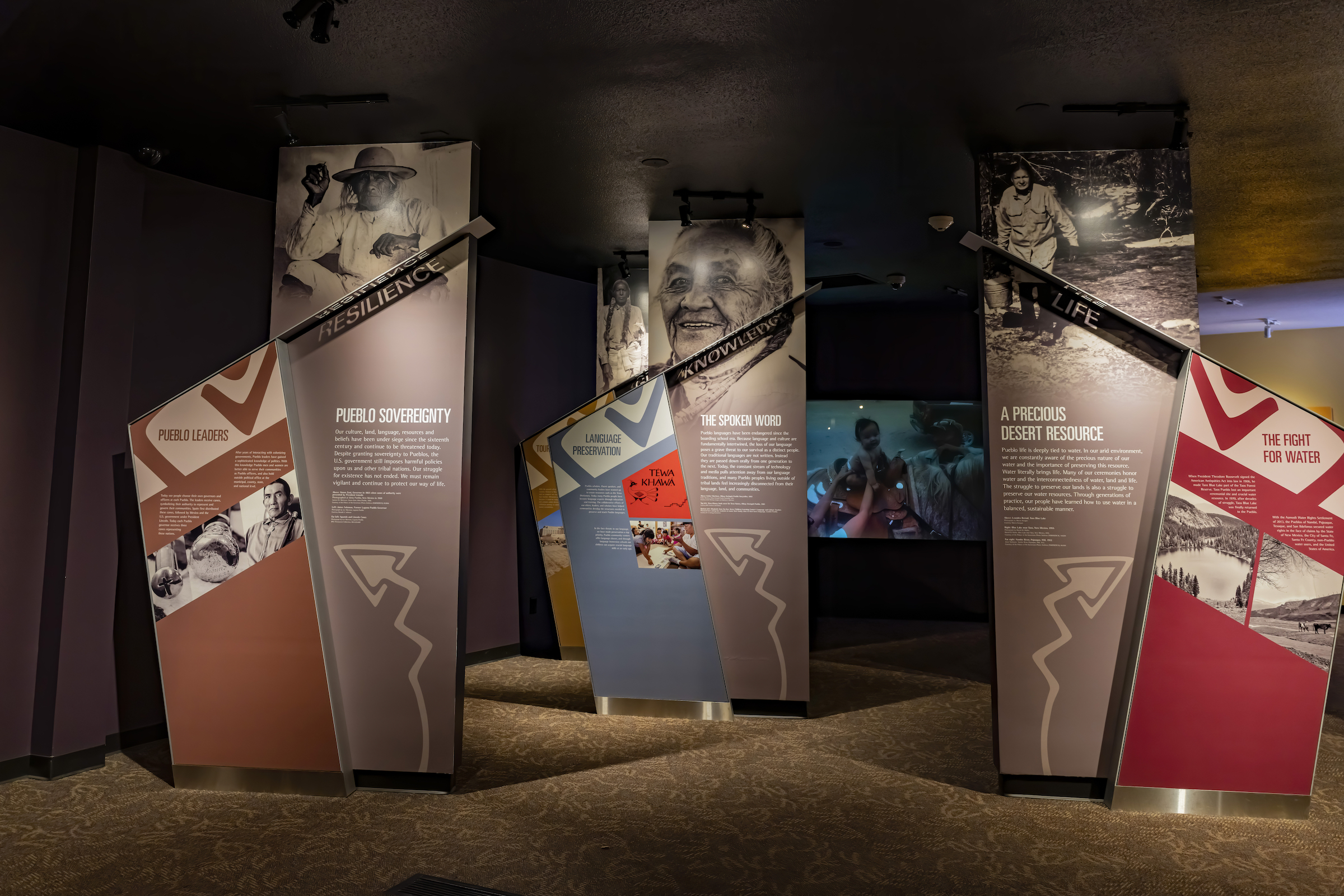When the Agua Caliente Cultural Plaza opens in November, it will share the history, traditions, and modern life of southern California’s Agua Caliente Band of Cahuilla Indians. The 5.8-acre complex in downtown Palm Springs will include a museum, 360-degree animation theater, walking trails, an education garden, and a luxurious spa fed by ancient hot springs. This new world-class destination will be a welcoming environment for tribal members and the public at large.
But unlike other renowned Native-focused cultural centers, such as the Heard Museum in Phoenix or the National Museum of the American Indian in Washington, D.C., which showcase multiple Native American cultures and are operated by corporate boards or government entities, this cultural plaza was created by and for the Agua Caliente tribal community. It is one of a growing number of attractions run by Native Americans to promote their own cultural heritage.
“For so long, our history, our stories, have been written for us,” says Sherri Rupert, CEO of the American Indian Alaskan Native Tourism Association. “So we want to reclaim that narrative and tell our own stories.”
AIANTA was founded in 1998 to serve as a united voice for tribes to address inequities in the travel industry and promote Indigenous tourism and hospitality. It is governed by an all-Native board of directors. Rupert is of Paiute and Washoe heritage.
UNIQUE EXPERIENCES
There are 574 federally recognized tribes in the U.S. Two hundred and twenty-nine are based in Alaska; the others are located among 35 additional states, including Hawaii. The largest is the Navajo Nation, which is spread across 16 million acres in Arizona, New Mexico, and Utah. Each tribe has its own culture, language and unique history.
“I often hear, ‘If you’ve visited one tribal community, you’ve seen them all.’ And that is so far from the truth,” Rupert explains. “Each one of our tribes is sovereign.”
In Albuquerque, New Mexico, the Indian Pueblo Cultural Center celebrates the culture of the state’s 19 Pueblo tribes. It was founded in 1976 on nearly 80 acres owned by the Pueblos and comprises a museum and gallery, a library, Native American arts store, and an acclaimed restaurant.
Pueblo people received their name from the structures in which they lived — multi-story adobe structures, often nestled into cliffs, that would house entire clans. Davida Bacenti (Diné) is the executive chef at IPCC’s Indian Pueblo Kitchen. She uses food rooted in tradition to connect visitors with Native culture.
“What we eat comes from Mother Earth. We have to try at least once to taste the berries, to taste where it really came from, and to give you that story,” she says.
To help foster economic growth and food sovereignty within the Pueblo communities, IPCC is building a makerspace facility. Scheduled to open in mid-2024, the three-acre complex will include a commercial kitchen/incubator in which entrepreneurs can develop food businesses, a hoop house, and an expanded farm and garden space.
“This makerspace, with a food and farm focus, is an outstanding example of the Indian Pueblo Cultural Center’s mission: to perpetuate Pueblo culture, along with creating opportunities for economic development amongst Pueblo and local communities,” says IPCC COO Monique Fragua, a member of the Jemez Pueblo.

FIRST NATION GROWTH
Canada also has a thriving Indigenous culture. It is home to more than 600 First Nation, Inuit, and Métis communities. Some, such as the Ojibwe, Mohawk, and Gwitchen, straddle the border between the U.S. and its northern neighbor. The Indigenous Tourism Association of Canada supports the growth of tourism and the development of authentic experiences for its Indigenous people.
“It wasn’t always cool to be Indigenous, and a lot of people were ashamed of who they are,” says Ryan Rogers, communications manager for ITAC. Rogers is from the Musqueam First Nation in Vancouver, British Columbia. “Indigenous tourism really creates a space for people to be proud of who they are and to share who they are with visitors.
According to Rogers, Indigenous tourism is one of the fastest growing sectors in the industry in Canada, with more than 1,800 Indigenous tourism businesses in the country. “All of the businesses that we represent are at least 51% Indigenous owned or controlled,” he says. He notes that they must be able to demonstrate a responsibility to their local Indigenous community.
One way to learn about a multitude of Native cultures is the powwow. Hundreds of powwows are held throughout the U.S. and Canada each year, showcasing the diversity in tribal traditions.
The Wendake International Pow Wow, held each summer in Quebec, is one of the most important gatherings of First Nation tribes in Canada. Guests can watch dance and drum competitions, discover Native crafts, and sample Indigenous cuisines.
In the U.S., the largest event is The Gathering of Nations, which attracts more than 3,000 dancers and singers from more than 500 tribes from North America. Held in Albuquerque on the fourth weekend in April, the festival is a way for tribes to commemorate and preserve their culture.
“We are the first people of this nation. And Indigenous tourism not only provides for our economies in the tribal communities, but even more important is the perpetuation of our culture,” Rupert says. “We have something to share that nobody else has. We have our stories, we have our people, we have our culture, we have our art. We are not only teaching you all, but we’re also teaching our next generations. For our Indigenous nations in this country, that is the most important thing.”
Read more Travel articles from Green Living.







